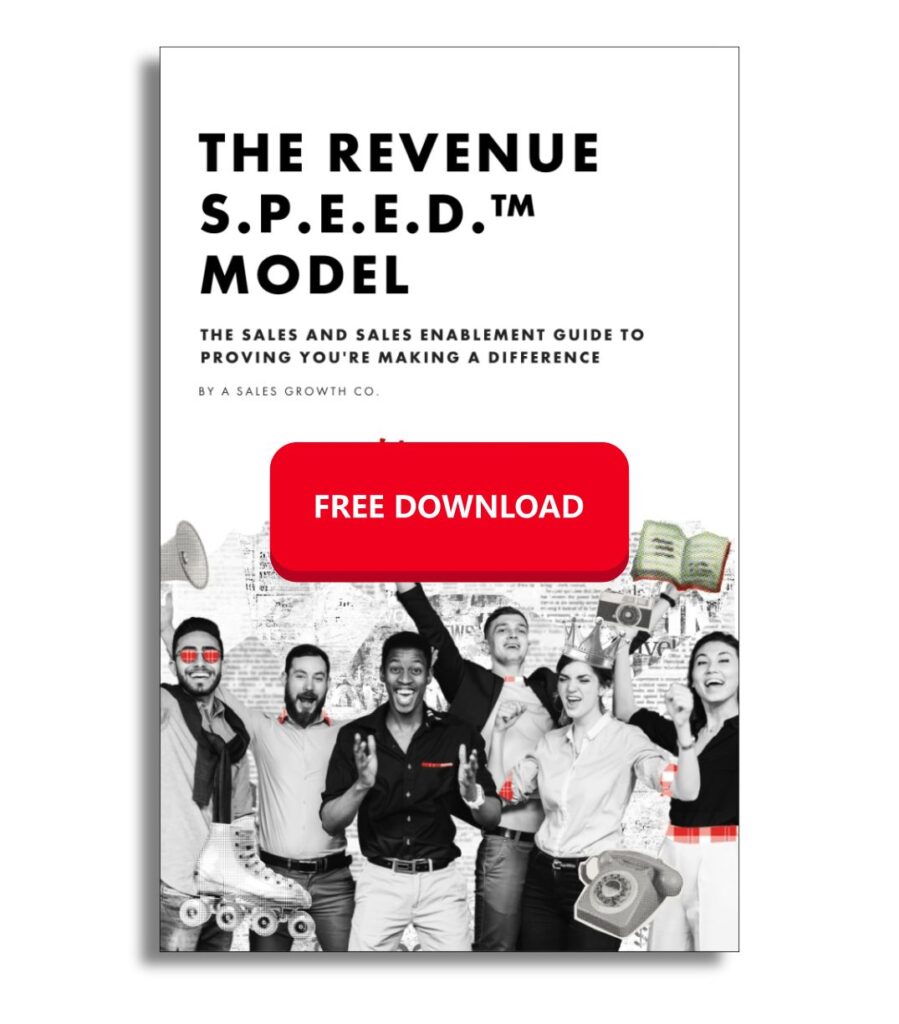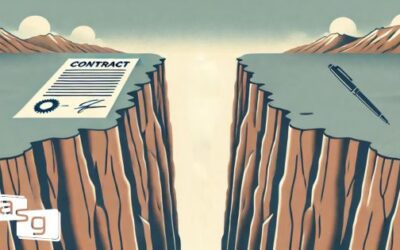Sales enablement, we see you, we hear you. You’ve been investing resources into training and developing salespeople. Despite your efforts, leadership is demanding evidence that your work is producing returns. They want to know if your playbooks and lectures are driving improvements in win rates, deal sizes, cycle times, and quota attainment.
How do we do that? How can we provide clear, quantifiable, undeniable proof that our budget is directly correlating to revenue?
For starters, the problem is that we’re lacking integration across 3 distinct layers that exist in every sales org. Skills taught in training do not carry through to how opportunities are managed. Because of this, we can’t prove that the skills we taught are affecting these opportunities.
Solving this requires a sales enablement framework. A guide, structure, and checklist that connects all 3 layers into 1 mechanism. The Revenue S.P.E.E.D. Model was designed just for this purpose.
Skills Management
This is mostly done well. This is the foundation of our framework. The trainings, workshops, all that jazz.
Primary goal of skill management is developing individual selling capabilities.
What you must have in your skills layer:
- Defined sales methodology outlining how your organization sells.
- Centralized learning environment for reps to find continuing learning materials for skill reinforcement and measurement.
- Certification processes to evaluate reps methodology / selling competency
- Training / onboarding protocols for identifying and capturing the data that increases deal probability (also know as Buyer Input Data).
- Training / onboarding covering prospects’ businesses, the problems your product solves, product knowledge, and business acumen
- Established processes for coaching and feedback
Skill management functions are owned by the sales enablement team. They are responsible for the delivery, implementation, and it’s their job to make sure this structure is adhered to.
Opportunity Management
Foundation is laid, time to operationalize it. The goal here is to start making progress towards the sales KPIs. Benchmark your win rates, deal sizes, quota attainment, etc. here. As time passes we want to start noting improvements or areas to work on. Primary objective of the opportunity management layer is to ensure consistent execution of the methodology you’ve implemented. Ownership falls on the frontline sales managers who are coaching and analyzing each deal.
Must have pieces:
- Qualification framework aligned with the methodology that identifies real opportunities based on factual data and not feelings.
- CRM fields built to capture the buyer input data mentioned earlier and a scoring system that indicates deal strength based on the quality of this information
- Consistent pipeline and deal review processes.
- “Observable moments” – providing visibility for managers to evaluate reps implementing the skills they’ve learned live on calls.
- Rep scorecards that track performance against their individual metrics.
The opportunity layer is where sales enablement’s investments in skills training become visible. Regular analysis highlights strengths and weaknesses and serves as the glue between learning, practice, and proper execution.
Without this layer, skill development efforts atrophy as reps go back to what’s comfortable and familiar.
Forecast Management
Forecasting is primarily owned by the sales operations teams and it’s nearly impossible for them to be accurate without proper processes in the first two layers. We need to be able to generate accurate predications of future closed revenue. To do this we need to merge historical data with the qualification insights data collected in the opp management layer.
Critical information to accurate forecasts:
- Clearly defined and agreed to criteria for what opportunities can be included in the forecast. Based on the scoring from the opportunity layer.
- Historical win rates, deal sizes, and sales cycle length across the scoring categories. (I.E. win rates for A deals vs. B deals.)
- A tracking system for forecast accuracy at the rep and manager levels
- A definition of what a good forecast looks like – what level of accuracy is acceptable?
Without integrating all 3 layers, forecasting becomes subjective. The credibility of a forecast becomes questionable when they’re based solely on deal stage probabilities rather than verified buyer qualifications.
Benefits of a Sales Enablement Framework
Now that we understand all 3 layers we can begin to implement this framework. Hopefully by now you can see the importance of integration across the 3 layers of the organization.
Aligning skills development with opportunity and forecast management allows enablement and leadership to quantify the effects of each learning and development curriculum. The model’s emphasis on measurement, scoring, and data verification gives all involved empirical evidence to find weak points and highlight effective contributions. Returns on skill investment can be directly mapped to pipeline and revenue forecasts.
Bridging previously siloed layers, the S.P.E.E.D. Model gives sales organizations the opportunity to optimize resources, accurately forecast performance, and maximize the return on enablement efforts.




0 Comments